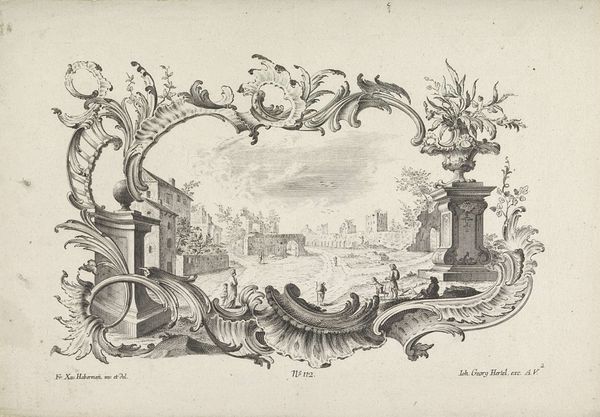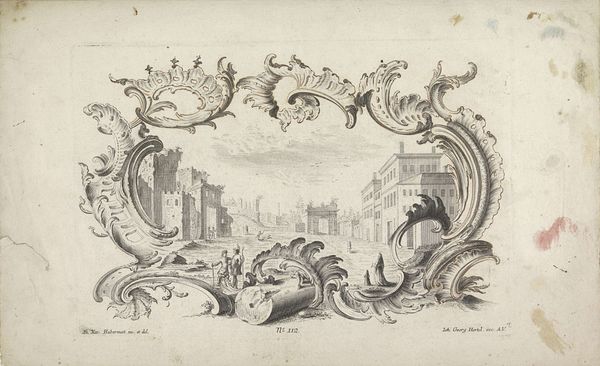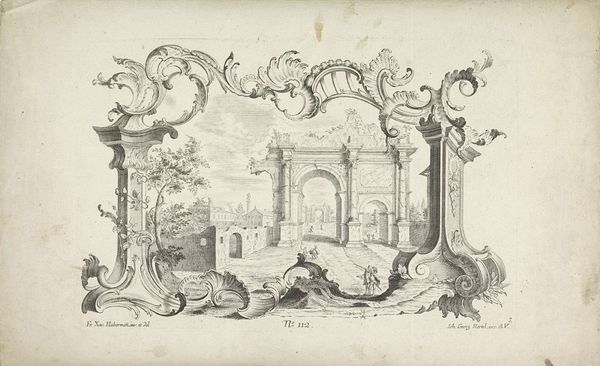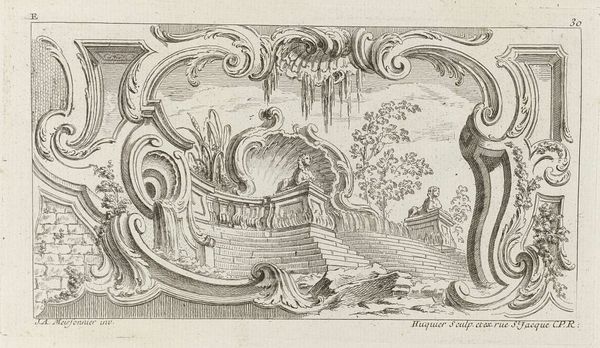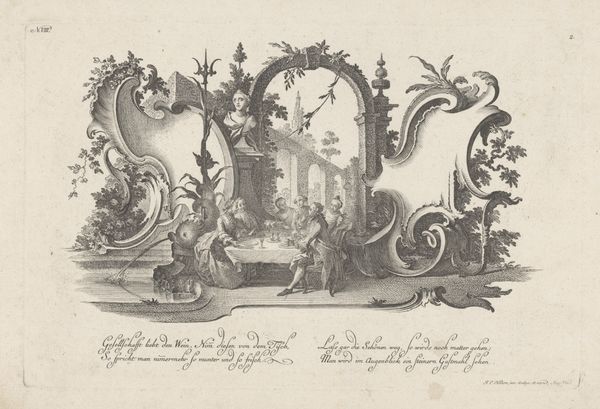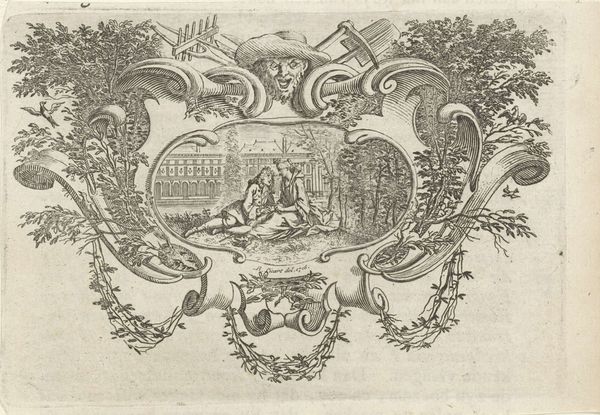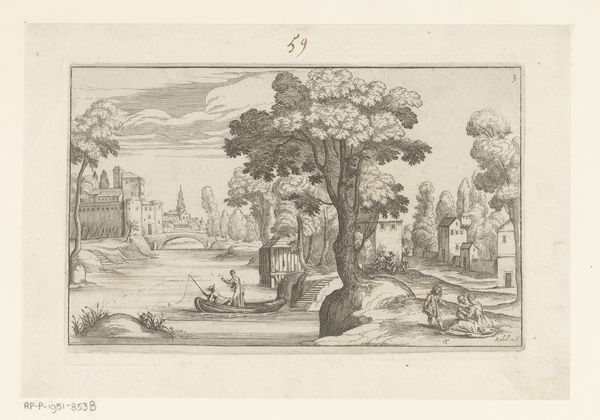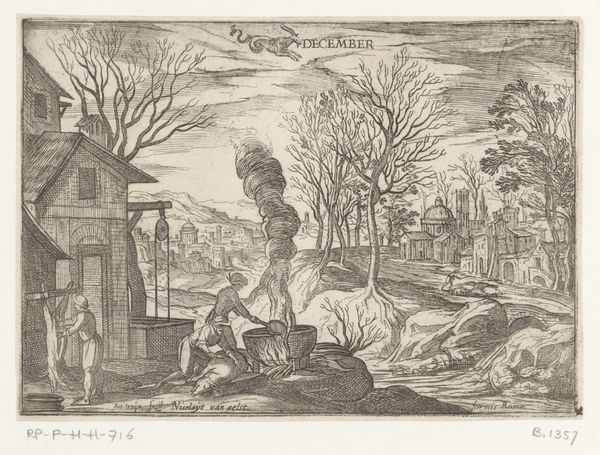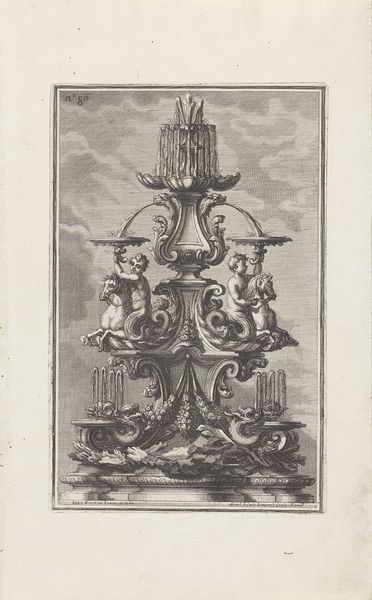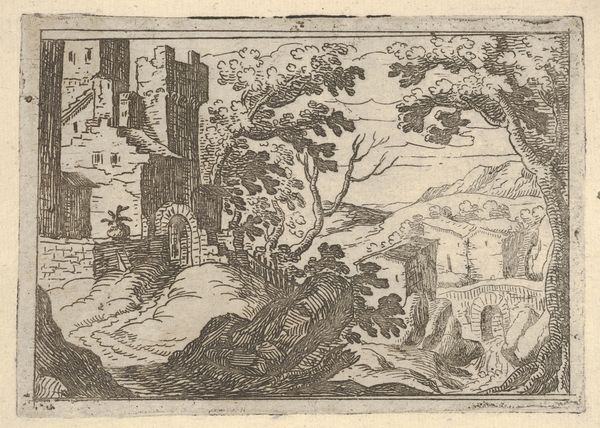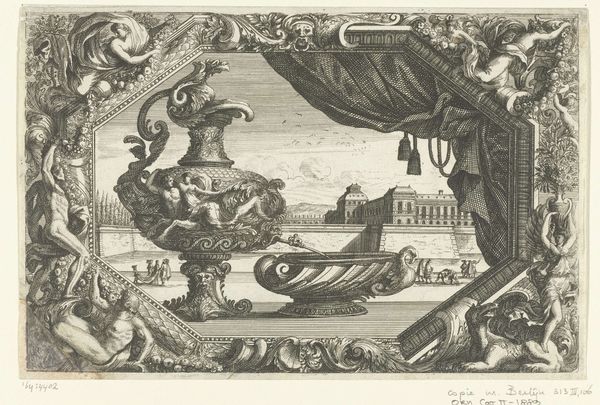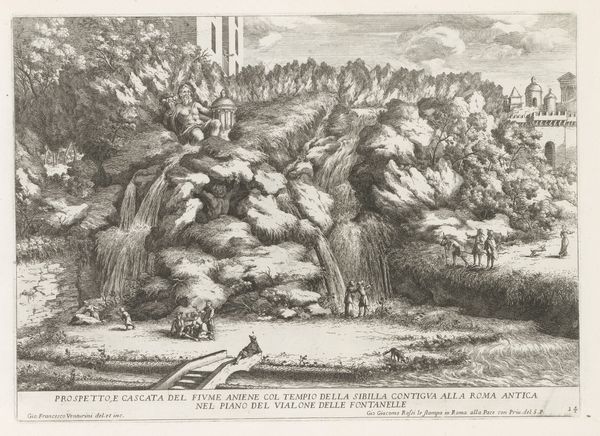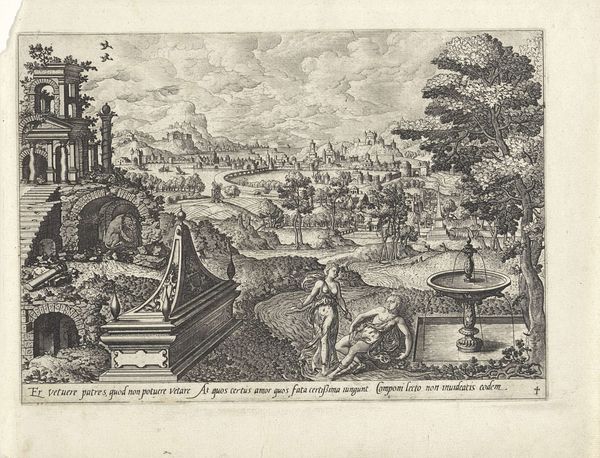
print, etching, engraving
#
baroque
# print
#
etching
#
landscape
#
line
#
cityscape
#
engraving
Dimensions: height 200 mm, width 300 mm
Copyright: Rijks Museum: Open Domain
Emanuel Eichel made this print called "Ruïnes in rocaille cartouche" sometime in the 18th century. Its subject is ruins framed by rocaille, an ornate style that was popular among the elite in Europe at the time. This image offers us a window into the aesthetic sensibilities of the 1700s, particularly in countries like France and Germany. Rocaille was all about elegance, curves, and decoration, but here, we see it combined with the theme of ruins. This pairing might seem odd, but it reflects a broader cultural fascination with the past and with the idea of decline, even among those who were living in luxury. The question arises: what is the public role of this kind of art? Is it merely decorative, or does it offer a commentary on social structures? Perhaps it’s a bit of both. The opulence of rocaille suggests a self-conscious display of wealth, while the ruins may hint at the impermanence of earthly power. Historians use a range of resources—from architectural surveys to social histories—to understand these kinds of images. By looking at the social and institutional context in which art is made, we can gain a deeper understanding of its meaning and significance.
Comments
No comments
Be the first to comment and join the conversation on the ultimate creative platform.
